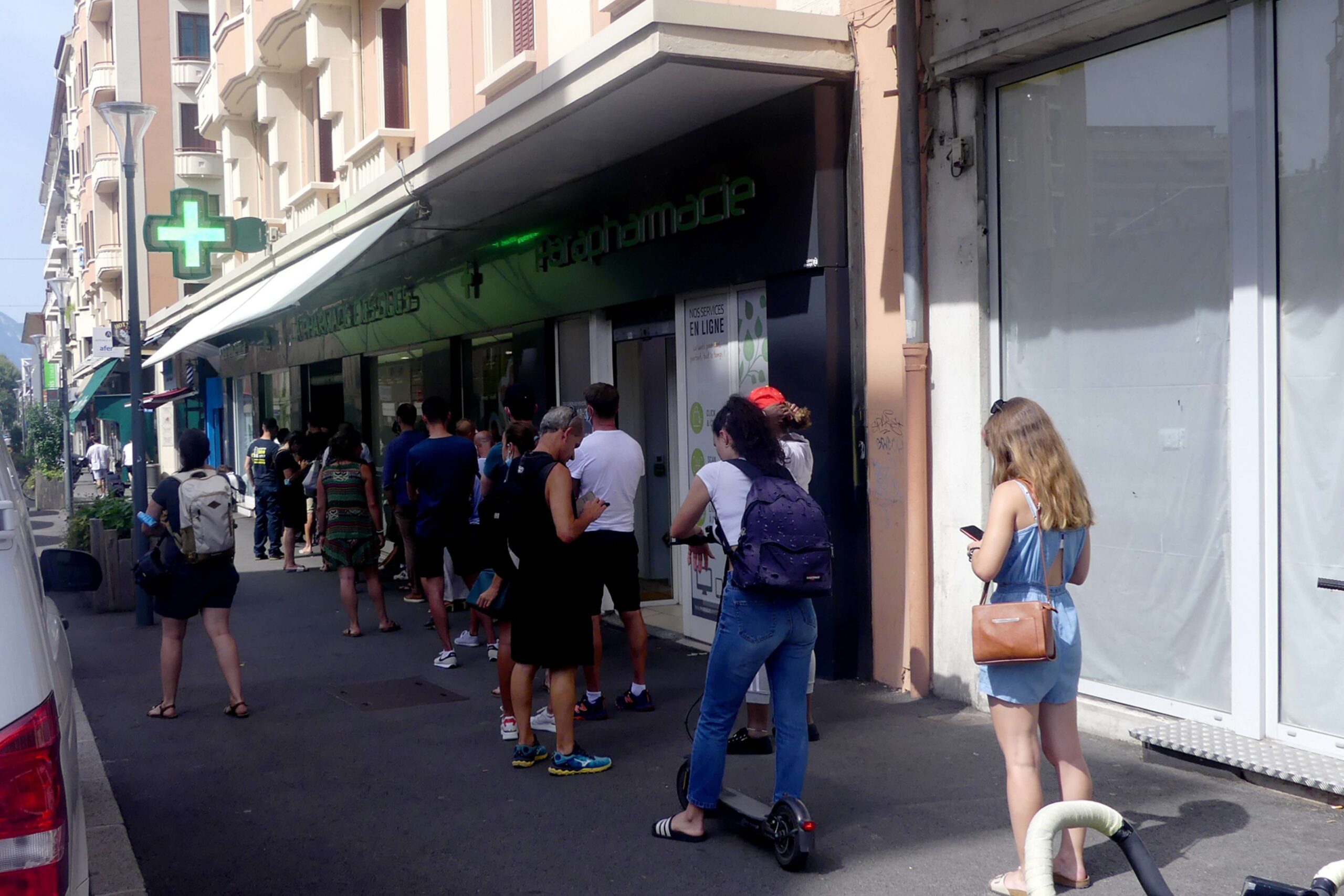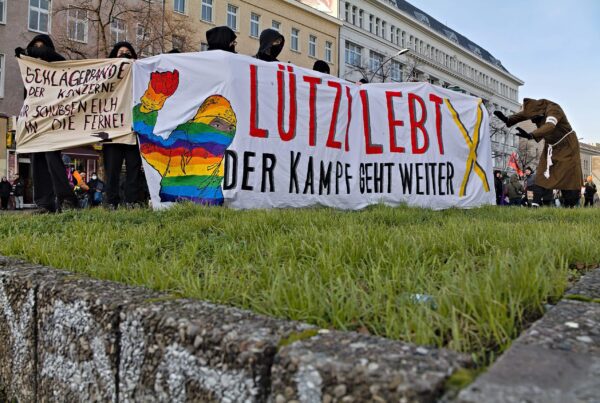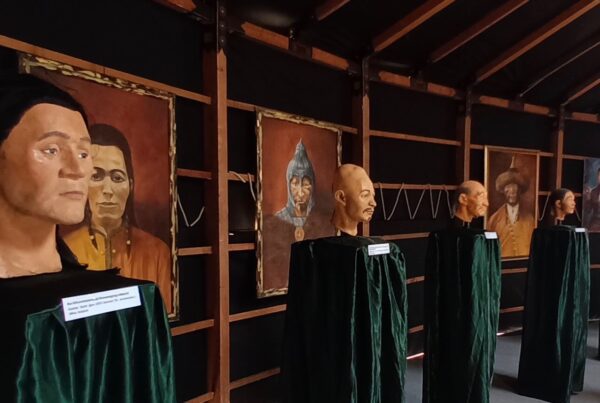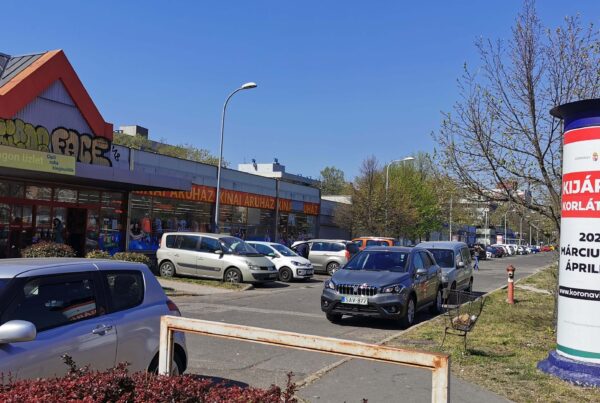The European Union likes to present itself as an inclusive entity that strives to reduce socio-economic disparities between member states while preserving and celebrating their cultural differences. It is a Union that professes to be based on principles of inclusion, tolerance, justice, solidarity, and non-discrimination. In fact, to read the new Social Rights Action Plan is to believe that Europe is “home to the most equal societies in the world,” a “unique social and economic model” bound to bring about “shared prosperity.”
The COVID-19 pandemic, however, revealed that this vision is nothing but an aspiration. It brought to the fore the underlying unequal power dynamics within the EU and the way that citizenship continues to be unequally valued. The old fault lines became particularly glaring in the way Eastern European[1] migrant workers were mistreated in the fields, greenhouses, and slaughterhouses of Western European member states. It became clear that there is a stark difference between western-EU and eastern-EU citizenship, between what passports determine and what they allow in the treatment of their holders. Any debates over tackling the emerging culture wars within the European Union should keep in mind this imbalance of power between East and West and how it informs and shapes the actions of both sides.
The European Union’s East-West Divide
The differential treatment of Eastern European workers during the pandemic reflects the unequal power relations between Eastern and Western member states and the internal political, economic, and social hierarchy within the European Union. This internal hierarchy manifests itself in the divide between a set of dominant, core Western member states who set the European agenda, drive the process, and generally get their way, on the one hand, and the subordinate, peripheral, Eastern member states, on the other hand. Norms and habits of solidarity are stronger among these core members, especially among the original founding six,[2] who have over time developed and consolidated common interests, discourses, and geostrategic positions and who share similar levels of economic development.
From 1945 to 1989, the Iron Curtain separated East and West not only physically, due to restricted movement, but also ideologically. Under the Communist regimes, Eastern Europe was seen as embodying the opposite of what Western Europe symbolized, as it had a different set of values, laws, economic arrangements, educational institutions, ideology, and culture. In the post-Cold War world, becoming an EU member state represented the opportunity to join an exclusive club that promised, among other things, economic development and political legitimacy. The 2004 and 2007 Eastern European EU enlargements, however, only reinforced the existing internal hierarchies, with considerable implications for perceptions of power relations, influence, and leverage between the older and newer member states. To this day, Eastern European countries are generally not involved in the “knowledge culture” of Brussels and have little political clout, as Western states turn mostly to each other for policy input and rarely reach out to Eastern Europe. In fact, despite their professed mission of further solidarity with Eastern member states, Western member states periodically contemplate a “multi-speed Europe” in which “moving in the same direction” may also be achieved by acting “together, at different paces and intensity where necessary,” statements that reinforce the second-tier status of Eastern Europe.
Freedom of Movement within the EU: Bridging the Gap?
Freedom of movement within the EU was supposed to be a key element of the process of ending this East-West divide within the Union. It was expected that freedom of movement would contribute to economic convergence by optimally allocating resources and factors of production across member states, and to social cohesion through exposure to and experience with different cultures and peoples. Through freedom of movement, Europeans’ understandings of community, membership, and democracy were to be reconfigured; the lives of EU citizens from other countries and their claims to equal treatment, equal opportunity, and fair play were to become a part of their realities. The idea was to bring European citizens closer together, foster understanding amongst them, reduce differences, and combat stereotypes for an ever-closer union. The Erasmus and Leonardo da Vinci exchange programs, for instance, were created with this purpose in mind.
And yet, in one of the clearest reflections of the EU’s internal hierarchies and uneven distribution of power, following the enlargements, Eastern European migrant workers did not immediately receive the same rights and access as their Western European counterparts. Rather, the pre-existing member states decided to implement transitional arrangements, a series of labor market measures put in place to restrain the potential inflow of migrant workers from the new member states. During the transitional arrangements period, Eastern European migrant workers had the right to travel and settle in the older member states, but generally experienced limited access to their labor markets. This access was restricted through various national measures, including complex application procedures, proof of suitability, work permit requirements, and quotas. In most older member states, the arrangements remained in effect until 2011 and 2014 for those states that had joined in 2004 and 2007, respectively, during which time the older members greatly shaped the economic opportunities of Eastern European migrant workers in Western Europe.
This discrimination represented the basis for, and legitimized the unequal treatment of, Eastern European migrant workers in Western member states. Their status as second-class EU citizens transformed them into a group of precarious migrant workers, temporarily admitted into the lowest sectors of the labor market yet excluded from the workplace benefits and rights that usually come with stable work contracts and residency. Instances of such fraudulent practices as underpayment, excessive work hours, poor accommodation conditions, and/or overcharges for accommodation have been well documented. Such practices provide no opportunities for upward mobility, meaning that many Eastern European workers remain dependent on low-paid, temporary, and flexible jobs in the secondary labor market.
Furthermore, this second-class status impeded migrant workers’ access to the symbolic category of being seen as full Europeans, with the corresponding socio-economic standing. As a result, cultural distinctions and racialized subordinations became common experiences among Eastern European migrant workers in the West, who faced high rates of downward mobility and prejudice. Differential treatment along the fault line of the old East-West divide fostered an understanding that people from the East needed to be kept at bay and were less worthy of rights. The picture that was painted for the people in Western European states was not one of the accession of equal European nations to the common project of the European Union, but one of Eastern European states as fundamentally backward. The image that was imprinted on the minds of many Western Europeans was thus one of economic, social, and cultural subordination of East to West.
In effect, rather than managing to spread “the peace, stability and prosperity enjoyed in the west to the east and ‘reunify’ the continent,” the EU created two-tier European citizenship, with Eastern EU citizens being considered less-than with respect to their Western counterparts. Nowhere has this two-tier European citizenship distinction been more visible than in the treatment of Eastern European migrant workers during the COVID-19 pandemic.
Eastern European Migrants during the COVID-19 Pandemic
In a crisis characterized by great uncertainty, as the COVID-19 pandemic certainly was, member states failed to remember calls for solidarity and a united European Union, instead reverting to old asymmetries of interdependence and bargaining power. These power asymmetries manifested themselves, among other ways, in the pressuring of Eastern European governments to open their borders and send migrant workers toward the West, in uneven entry restrictions, and in the mistreatment of Eastern European workers, their status as fellow EU citizens notwithstanding.
Many Western member states used the pretext of the pandemic to blatantly disregard the rights and needs of Eastern European citizens and to selfishly look after their own interests. The readiness to protect human lives at nearly any economic cost did not extend to all citizens equally. While Western European states mandated social-distancing rules, remote work, and mask requirements, they were ready to give up on such precautions when it came to migrants from Eastern Europe. In a fluid situation with no vaccinations yet available, there was a willingness to subject migrants to immediate danger for the sake of keeping the agricultural sector alive and asparagus on German dinner plates.
For instance, in Romania, prospective migrant workers were transported to Western Europe in cramped airplanes, with no possibility of social distancing. From Germany to the Netherlands, Belgium, Spain, Italy, and the UK, the lack of work- or housing-related protective measures for Eastern European migrant workers (such as the provision of masks, gloves or hand sanitizer; proper time off during working hours; and social-distancing measures) has been well documented. For instance, migrant workers were shoved 14 to 15 at a time into eight-seat vans and transported to the fields, or crammed together in small lunchrooms in their dozens. Furthermore, when borders closed and many Eastern Europeans became unable to return home, they were often forced to stay with their employers, who also provided housing, rendering them vulnerable to abuses. In order to keep their jobs and, thus, their accommodations, migrant workers had to put in longer working hours with less pay, no sick days, and/or unsanitary working conditions. Moreover, Eastern European migrant workers were completely cut off from the surrounding local communities during the pandemic. They did not work side by side with locals, they were often housed in shared accommodations located far outside residential areas, and they were transported to and from work using separate means of transportation. Segregation, far from leading to a political outcry, was politically willed.
In effect, Western European countries were willing to ignore the potential danger of a COVID-19 outbreak as long as this danger existed only within migrant communities. As soon as outbreaks started to feel too “close to home,” and under pressure from the media and trade unions, some governments mobilized and put together Commissions to investigate and act on the numerous allegations of improper working and living conditions. In practice, however, enforcement of labor legislation was limited. In the Netherlands, for instance, the fines for infringements were so low as to have no deterrent effect and inspectors operated via phone due to COVID-19 restrictions on physical inspections. In Germany, meanwhile, the government itself prevented trade unions and advisory centers from reaching out to workers, making it difficult to properly assist them and to monitor the dire conditions they were facing. To be sure, insufficient monitoring of labor conditions and poor enforcement of labor legislation in sectors dominated by Eastern European migrants is not specific to the pandemic period. It was, however, amplified during the pandemic, when the question of who to protect and where to accept risks heavily disadvantaged this particular group of EU citizens.
Last but not least, Eastern European migrant workers were largely excluded from receiving social assistance or benefits such as unemployment, sickness, disability, or survivor’s pension, as well as from being included in national COVID-19-related support programs. The pandemic highlighted how Eastern Europeans workers’ unequal access to social rights is a direct consequence of their unequal access to and poor conditions in the labor market. Because of the migrant workers’ contractual arrangements and the absence of labor unions in many of the sectors in which they worked (and even when these were present, the lack of representation for Eastern Europeans and migrant workers more generally), many fell through the cracks in terms of social support when the pandemic hit. Importantly, this unequal access to social rights within the EU has a strong “East-West geographical dimension” reinforced by the racialization of Eastern European migrants and their limited access to the labor market following the 2004 and 2007 enlargements (see Ulceluse and Bender 2022).
****
Like other critical junctures before it, including the eurozone crisis and the migration crises of the past decade, the COVID-19 pandemic provided EU member states with ample opportunities to implement measures that in normal circumstances would have been difficult to justify. Yet in a time that required solidarity and unity of purpose, member states turned inward, largely choosing nationalistic paths. They unilaterally closed their borders, hoarded or stopped the export of critical medical supplies, and played blame games. What is more, during the pandemic, intra-EU mobility and the treatment of fellow EU citizens reflected a hierarchy of rights, a hierarchy of importance in which the needs of citizens from Western Europe were deemed more important than the safeguarding of citizens from Eastern Europe.
What does this mean for the future of the EU? The fact that two of its core tenets—the freedom of movement and the equal treatment of EU citizens—were so easily disregarded and infringed upon might have long-lasting impact, potentially undermining the hard-won socio-economic integration of its member states. Yet there is nothing inevitable about this. A new critical juncture, the war in Ukraine, has shown that member states can indeed band together and act as one. Where there is a will, there seems to be a way, so there is still hope that the social, economic, and political division between East and West can be mended in time. The European Union can live up to its name if it chooses to do so.
This article is based on:
Ulceluse, Magdalena and Felix Bender. “Two-Tier EU Citizenship: Disposable Eastern European Workers During the COVID-19 Pandemic.” Organization 29(3) (2022): 449–459. doi:10.1177/13505084211061229
[1] Although the boundaries and identities of Western, Southern, Nordic, Eastern, and Central Europe have fluctuated over time, changing positions and meanings in the political, geographic, cultural, and symbolic cartography of Europe over the past century (see Lee and Bideleux 2014), here we employ the dichotomous labels of East and West, as they more accurately reflect the new fault line within the EU that our article argues has become visible during the pandemic. The countries included in our definition of Eastern Europe are all current EU member states that were formerly ruled by Communist regimes (not including the former East Germany, since it is no longer a separate entity from the rest of Germany): Bulgaria, Croatia, Czechia, Estonia, Hungary, Latvia, Lithuania, Poland, Romania, Slovakia, and Slovenia.
[2] That is: Belgium, France, Germany (at the time West Germany), Italy, Luxembourg, and the Netherlands.
Photo: “Queue Pharmacie Tests Passe Sanitaire à Chambéry (août 2021)” by Florian Pépellin licensed under CC BY-SA 4.0







